These past couple years, publisher NIS America has been rather prominent in localizing Falcom’s The Legend of Heroes series in a rather timely manner. While the west still had to wait almost three years for the English localization of Eiyuu Densetsu: Kuro no Kiseki, the wait is finally over.
I’ve played the Japanese version of the Trails games on multiple occasions, but even so, I couldn’t wait to see The Legend Of Heroes: Trails Through Daybreak. And that’s solely because those games are enough to make even my relatively fluent Japanese knowledge bend to its knees. But enough pre-amble.
Welcome to the Republic of Calvard
Trails through Daybreak begins the story in the Republic of Calvard, in the year of S1208. If we were to follow the official timeline, this is roughly a little over a year after the events of Trails to Reverie. You play as Van Arkride, who is known as a “Spriggan”. Van runs the Arkride Solution Offices, where he’ll take on any job that the client can’t trust the local authorities, such as the police or the Bracer Guild.
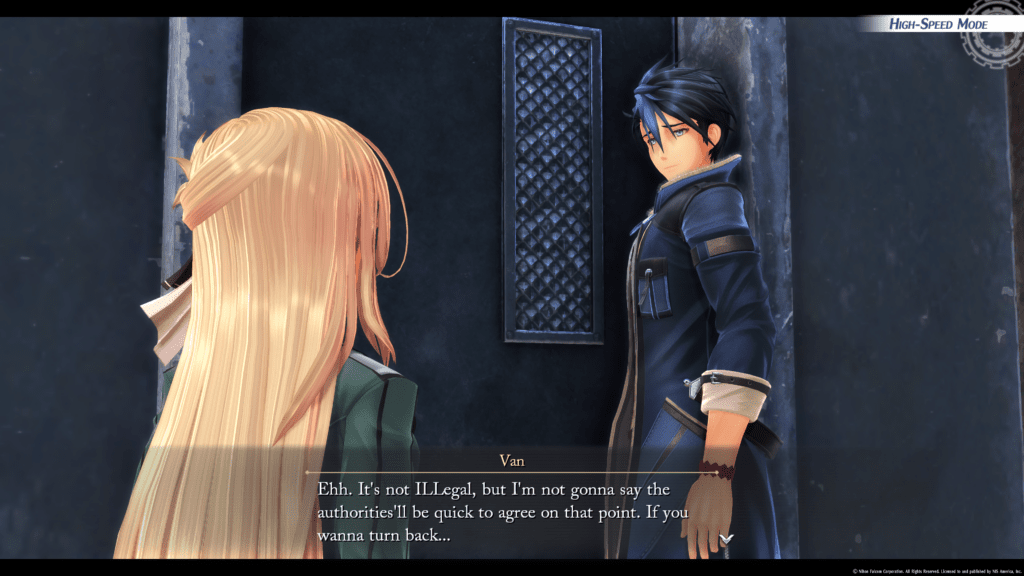
One day, Van accepts a request from a young girl from Aramis Academy, Agnès Claudel, who tasks Van with procuring an ancient orbment that has been passed down in her family via her grandfather. Later on, Van finds out that this “ancient orbment” is called the Genesis, and as such, he must help find all eight of them, lest they fall into the hands of a mafia organization that has been on the prowl throughout Calvard.
When it comes to Van’s personality, he is perhaps one of the first mature protagonists of the series. While he might look cynical and moody, deep down he’s just someone who loves cars and sweets, and really cares for his teammates. My favorite character though? It has to go to Langport’s red-haired young man, Aaron Wei. He’s hot-blooded, sure, but his character design and personality quickly made him one of my favorite characters in the ENTIRE series.
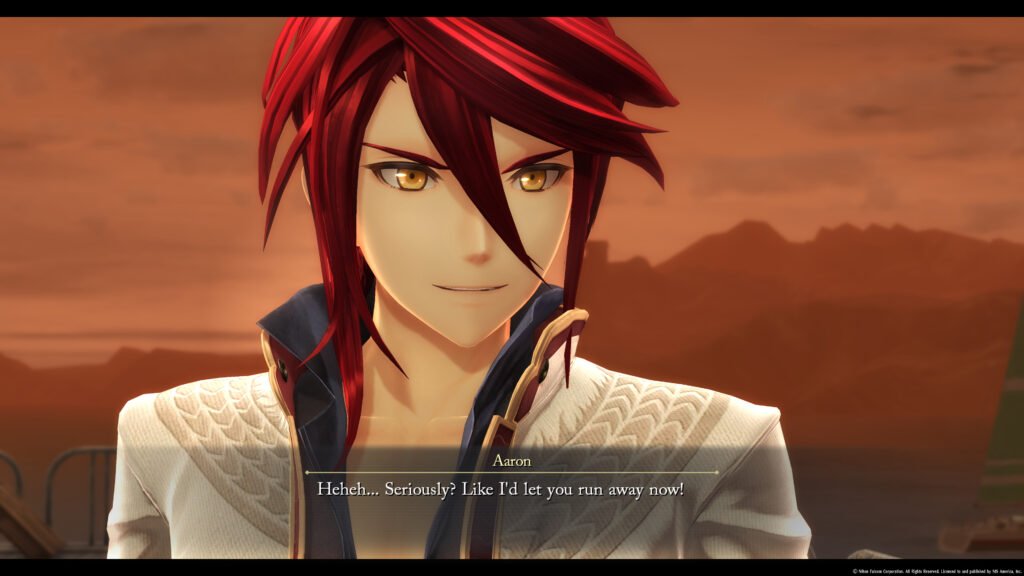
A Trails Game With No Homework Required?
Now, this might sound weird, but despite the story taking place a year after Reverie, Trails through Daybreak is a title that I personally feel does not require you to do much additional homework to truly experience it.
The series has been going for almost 20 years, and Nihon Falcom clearly knows this. And remember: this is also the eleventh game in a series full of games whose nature relies on hundreds of hours of gameplay.
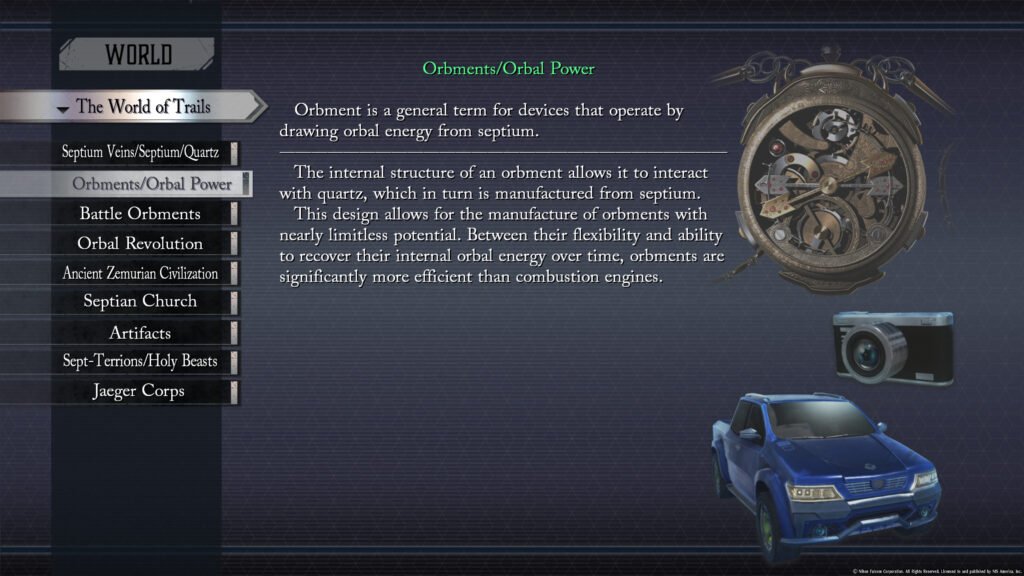
While certain parts of Daybreak’s dialogue will throw out some names that might feel familiar to series veterans, they aren’t strictly required to understand the plot for the most part. This is a brand-new arc, focusing exclusively on the Calvard Republic.
Furthermore, the game also features the Archive, where you can brush up on several key terms of the series, and even check a digestible timeline, underlining a few of the organizations and what happened across the series.
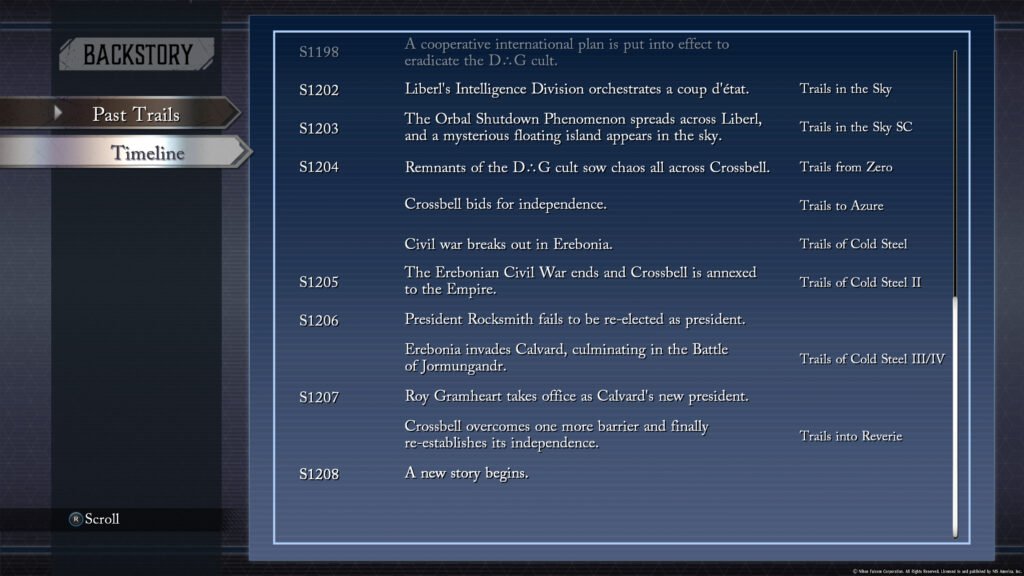
The New Dual Combat System
The combat system in Trails through Daybreak is definitely one of the main highlights of the title. While you have the classic turn-based battle system, you also have what the game calls Field Battles, which allows you to damage enemies in the overworld without getting into a turn-based combat.
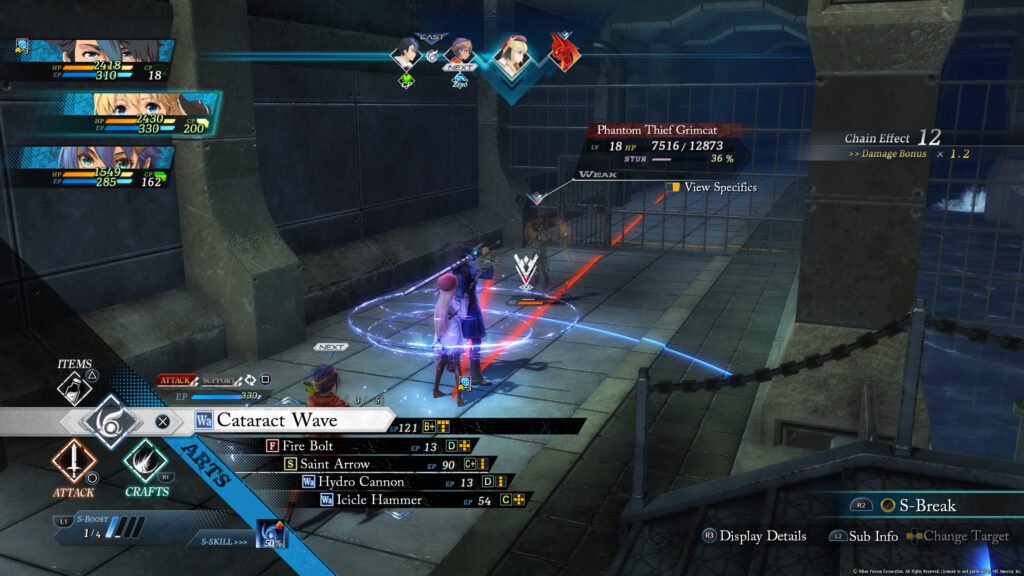
There are times where you can use this system to quickly dish out some damage, and even stun the enemy to get yourself a quick advantage before deploying the Shards, which shift the combat into the turn-based system you might be familiar with.
Still, being the first game to use this newly updated system, it definitely feels very…experimental at times. Engaging enemies this way comes at the cost of a significant amount of damage, with turn-based combat definitely being preferred for certain enemies.
Combat is also where you’ll meet the SCLM system. How it works is that when characters are close to one another, they can augument each other with some buffs. There’s not much to say about it, because it will feel very familiar if you’re used to Falcom’s games.
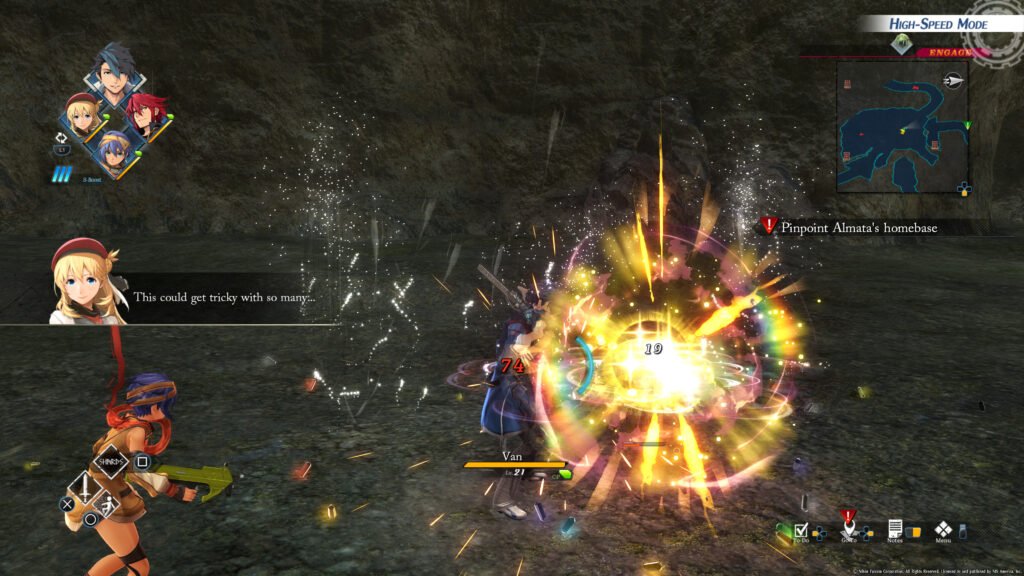
A Greatly Reworked Orbment System
Another feature that has been changed considerably is the Orbment system. In the Trails system, this was a stapler that determined your ability for battles, depending on your quartzes and skills. In Trails through Daybreak however, while you can still set quartzes for stat boosts, the Xiphas held by the protagonists instead operate using what are called Drivers and Plugins.
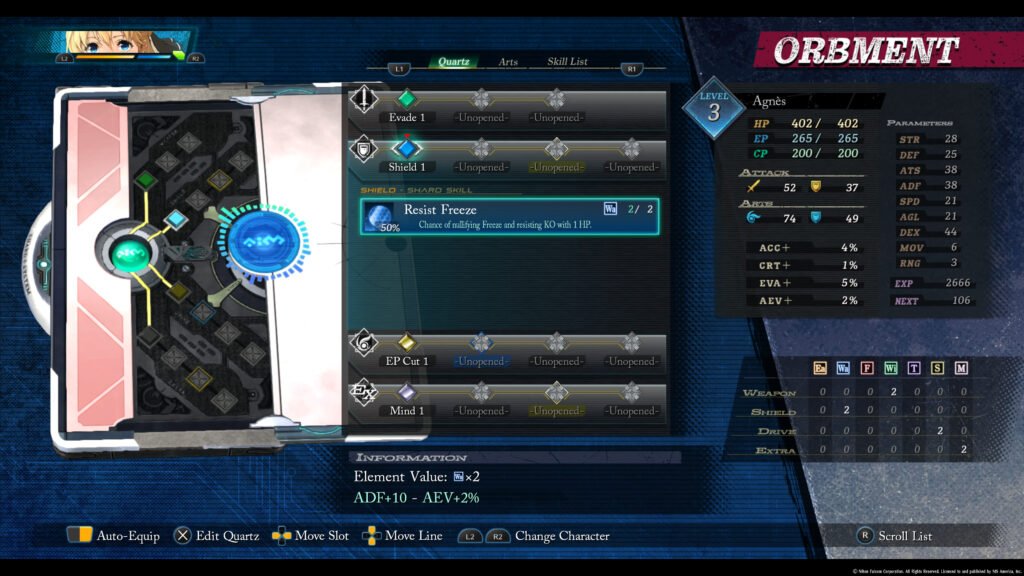
When it comes to Drivers, you can set them to any character, who will then be able to use all of the Arts that are specific to that Driver. Furthermore, each of them also has what are called Plugin Slots, where you can set up to two skills that are not part of their kit, such as water-based skills on a Earth-skill based Driver, for example.
You also no longer have Master Quartzes, which was another staple of the series. Instead, this is replaced by something the game calls a Holo Core. By itself, they do not have Arts of any kind, but they do give the character some stats, such as EP, Evasion, etc.
It does make me wonder why did Falcom change this system in the first place. It definitely takes some getting used to, especially if you’re playing on a higher difficulty, but if you’re like me who just wants to enjoy the story, it’s not super complicated to grasp.
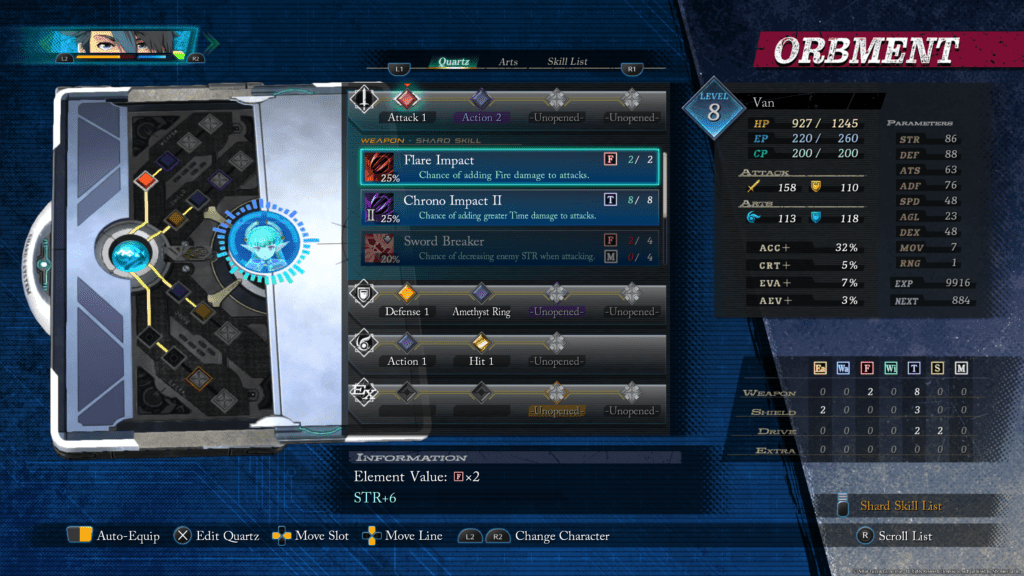
A New Engine and Look
In the graphics department, we have a brand-new in-house engine present here, which Falcom has been using in their current titles. Unfortunately, the PS5 version lacks the graphical optimizations and improvements that PH3, one of NIS America’s partners, has done to the Switch and PC ports.

But don’t let that disappoint you, because this version does have the improvements that Falcom did when the PS5 port was released back in the day in Japan, such as the addition of High-Speed Mode, the ability to change the font size, and of course, easy porting of your save file from PlayStation 4 to PlayStation 5.
Daybreak’s L.G.C. System
As you do the 4SPG side quests, there will be several moments in the game where you’ll have to pick between different choices that will affect a meter called the L.G.C. Alignment, with LGC standing for Law, Gray and Chaos.
Picking choices that will side Van with the law will inch the counter towards Law, while picking the dirty and illegal sounding choices will inch it towards Chaos, and Gray is sort of like the in-between of the two. While this won’t affect the game’s ending in the long run, it will definitely affect how the story plays out ever so slightly.
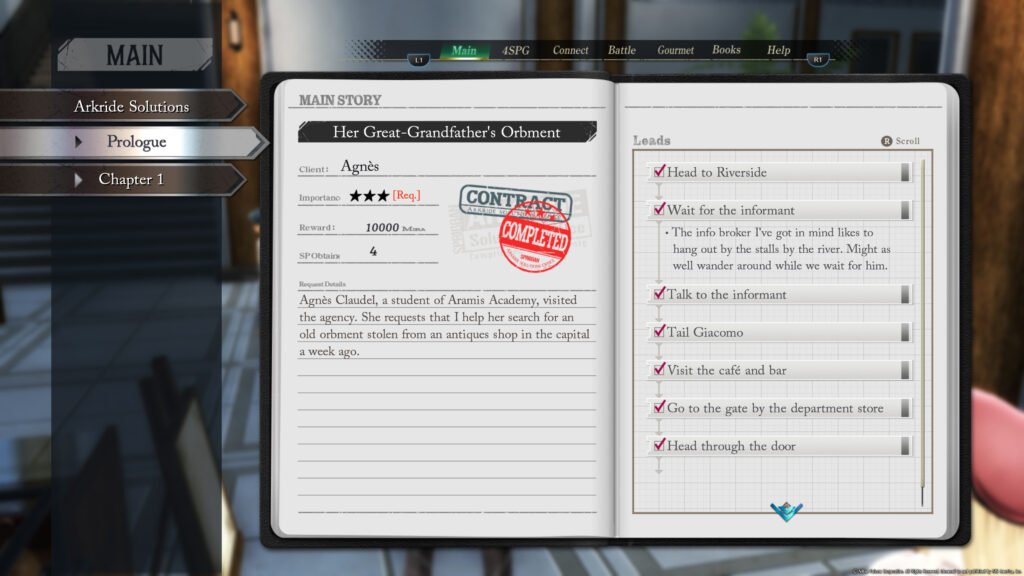
When it comes to completing the game, you can easily expect to take more than 100 hours for the Platinum. This is because there are a lot of things in-game that can only be done at very specific chapter points, and some of them even require you to finish the game more than once.
A Fresh Breath of Air of the Trails Series
It’s undeniable that Trails through Daybreak is an ambitious title. With completely reworked systems, a much more mature tone to the story with a variety of new characters and locations to meet and explore, and even a brand-new twist to the combat system.
Still, while it’s clear that Falcom did not skimp out on trying to make this a true “new era” to the series, that does come as a double-edged sword at times, where some of its systems feel very experimental, either not living to their true potential, or sometimes really managing to bring a fresh new look to an already beloved series.
Joys
- A competent story with a charming cast of characters
- An interesting blend between action and turn-based combat
Cons
- Some systems feel a tad experimental
- Lacks some extra content that the series is known for



